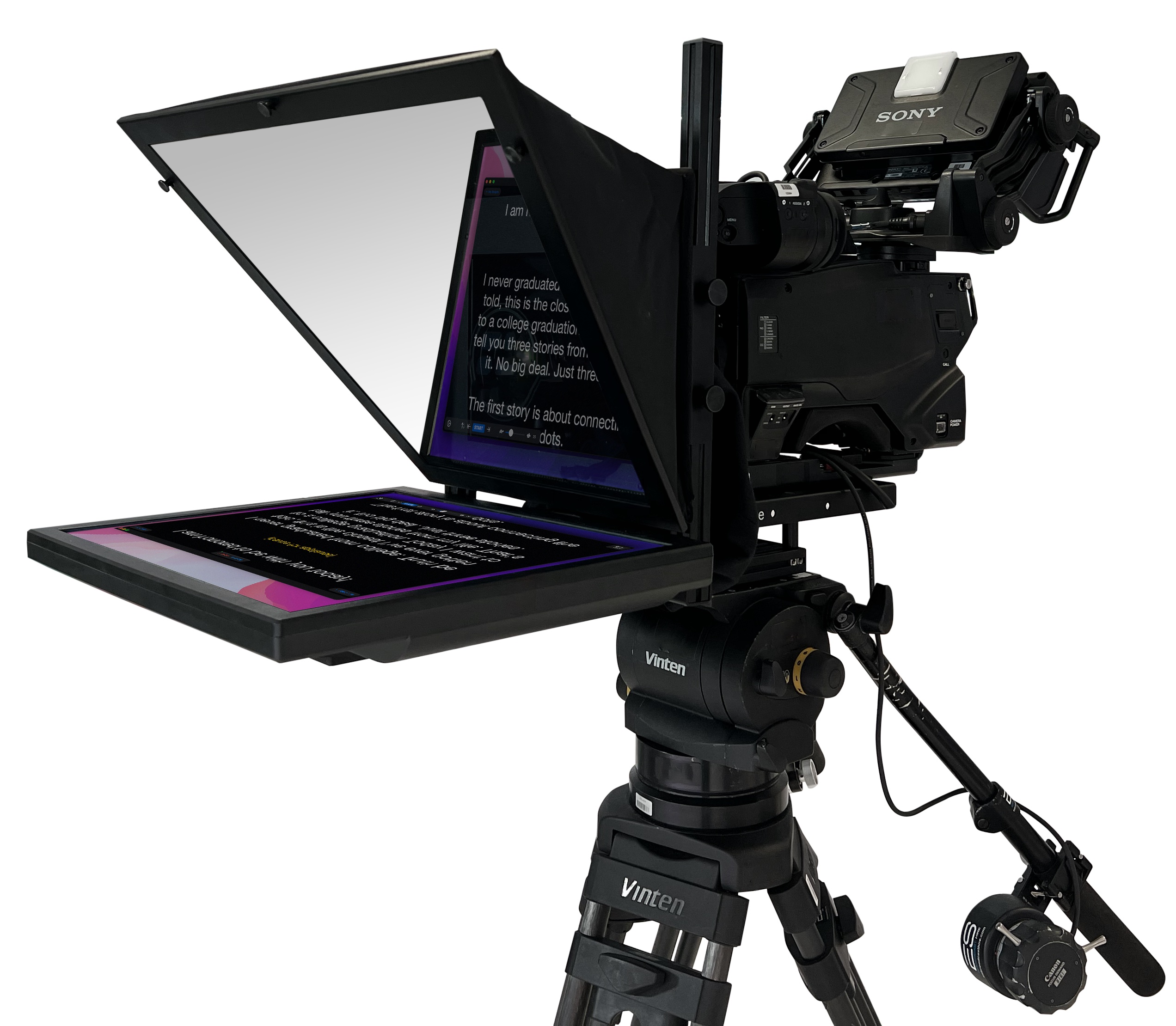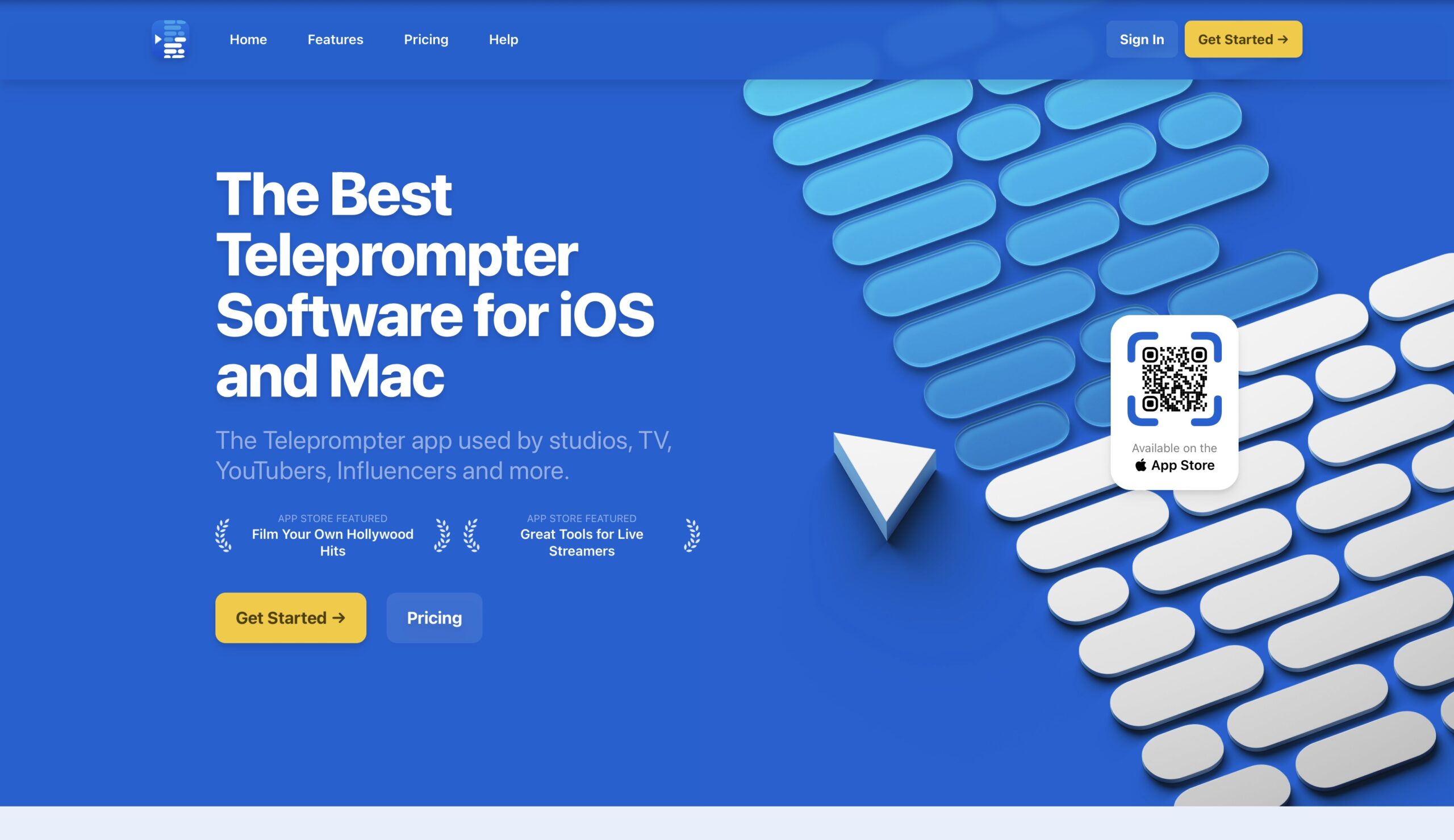Teleprompters in Video Production: A Comprehensive Guide
Have you ever wondered how news anchors flawlessly deliver lengthy news scripts, or how actors manage to recite their lines perfectly on camera without a hint of hesitation? The answer, quite often, is hidden in plain sight – the teleprompter. This unsung hero of the video production world ensures smooth delivery of words, making each shot look perfect and professional.
In this post, we, at Lapse Productions, will pull back the curtain on the fascinating world of teleprompters. We will take a deep dive into their purpose, operation, and vital role in video production, making this seemingly complex technology comprehensible and accessible. Whether you’re an aspiring videographer, a corporate presenter, or simply curious about the secrets of video production, this exploration of teleprompters will shed light on how we maintain the magic of seamless dialogue delivery on screen.

What is a Teleprompter?
A teleprompter, also known as an autocue, is a display device that allows someone facing a camera to read a prewritten script while maintaining direct eye contact with the camera lens. This tool has become indispensable in broadcasting and various types of video production as it enables presenters, actors, or speakers to deliver lengthy and complex content flawlessly.

How Does a Teleprompter Work?
Teleprompters use a relatively simple, yet effective principle. They project the script onto a piece of glass positioned in front of the camera lens. This script is visible to the speaker but remains invisible to the camera due to the angle of the glass and a special coating that reflects the text towards the speaker while remaining transparent from the camera’s point of view.
A teleprompter operator or the speaker themselves controls the pace of the script, which typically scrolls from the bottom to the top. Some advanced teleprompters use voice recognition software to scroll at the pace of the speaker automatically, providing an even more seamless experience.
At Lapse Productions, we use iPads running teleprompter apps for our teleprompter shoots. One iPad is on the teleprompter equipment attached to the camera system and the other one is controlled by a Lapse Productions crew member. The crew member will match the scrolling speed to the talent.

The Teleprompter’s Role in Video Production
A teleprompter plays several key roles in video production:
- Accuracy: It ensures that the precise message is conveyed, word for word, ensuring consistency and accuracy. This is particularly important for legal, scientific, educational, or corporate videos where specific wording might be crucial.
- Time Efficiency: With a teleprompter, retakes due to forgotten lines or script errors are significantly reduced. This means less time filming, which can translate into cost savings.
- Confidence Boost: For individuals who are not comfortable speaking in front of a camera, a teleprompter can be a lifesaver. By having the exact words in front of them, the speaker can focus on their delivery, knowing they have the script for support.
- Professionalism: A teleprompter allows the speaker to maintain direct eye contact with the camera, thereby connecting more effectively with the audience. This can make the video feel more professional and engaging.
Making the Most Out of a Teleprompter
While teleprompters offer numerous benefits, there are some best practices to consider when using one:
- Script Preparation: Ensure the script is well-written, with a conversational tone. Break the content into smaller paragraphs for easier reading.
- Pacing: Practice the script to maintain a natural pace. Reading too fast or too slow might confuse the audience or make the presentation seem unnatural.
- Expression: Remember, even though you’re reading, you should aim to express the content naturally, as if you’re speaking directly to the viewer.
- Practice: As with anything, practice makes perfect. The more familiar the speaker is with the script and the teleprompter, the more naturally they will deliver their lines. There are companies out there like Teleprompter Premium that offer free versions of their teleprompter that you can use to practice.

Conclusion
Teleprompters are much more than an accessory in the realm of video production. They are a fundamental tool for delivering professional, engaging, and accurate content. Whether you’re planning your next corporate video, educational series, or broadcast piece, consider the benefits of incorporating a teleprompter into your production process. It could be the secret weapon you need to elevate your content to the next level.
At Lapse Productions, we have a team of experts who can not only guide you in the efficient use of teleprompters but also take care of every other aspect of your video production needs. Our extensive experience in the field and our commitment to delivering top-notch services make us the ideal partner for your next video project.
So, if you’re planning your next video shoot and want to take your content to the next level, don’t hesitate to get in touch with us. Whether you’re a seasoned pro or stepping in front of the camera for the first time, we’ll be there to make sure your message comes across clearly, professionally, and effectively. Contact us at Lapse Productions today, and let’s bring your vision to life on screen.
Let’s Create Your Video Today
If you’re looking for top-notch quality, industry expertise, dependability, and competitive pricing, don’t wait any longer. Contact us now for a quote and let’s get started on your project.




